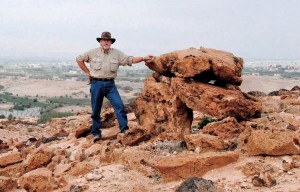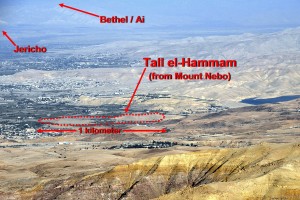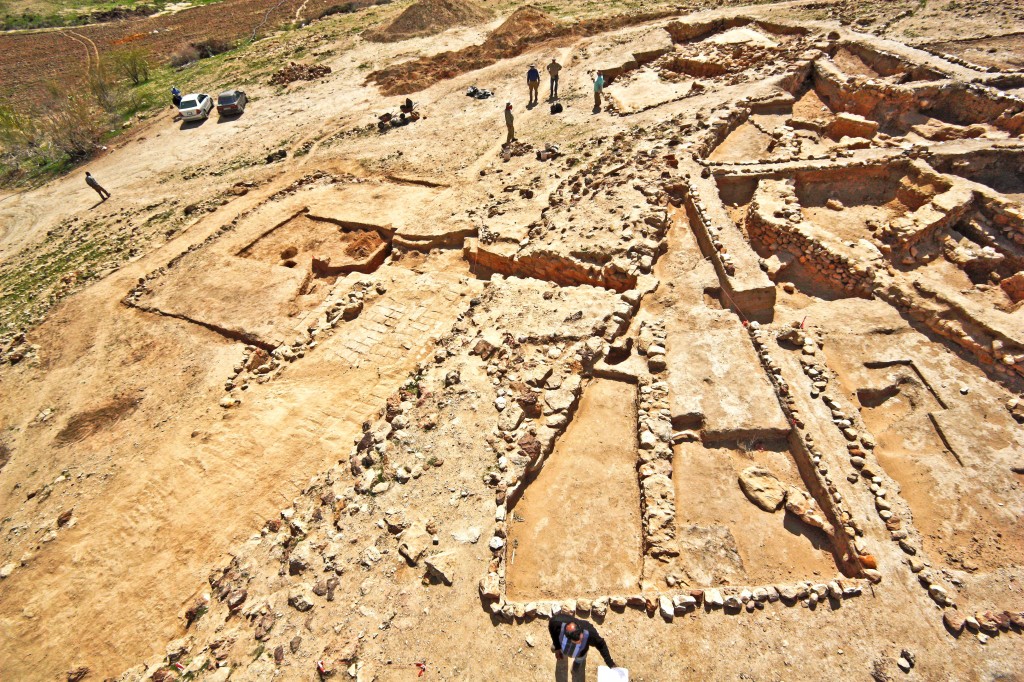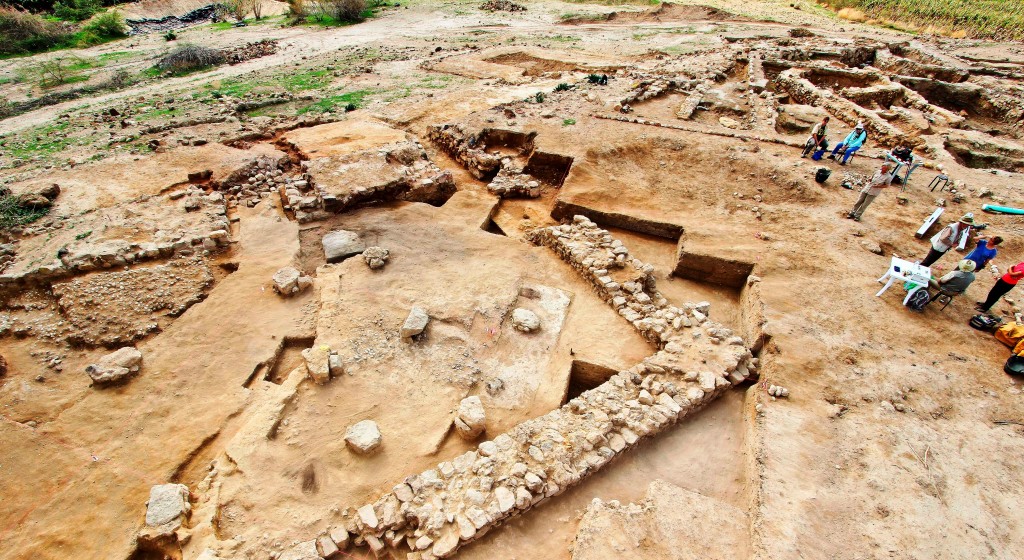By: Steven Collins
The relationship between archaeology and the Bible has been a much-debated topic over the last 25 years. The terms ‘minimalists’ and ‘maximalists’ are now as frequent as ‘exodus’ and ‘epigraphy’.
There seems to be little or no middle ground. On the one hand, William Dever is—as he has stated on several occasions—flattered to have the death of biblical archaeology ascribed to him, although he is quick to point out that, in fact, he “only wrote the obituary.” On the other hand, Bryant Wood takes those to the ‘left’ of him to task for not holding to a ‘literal’ interpretation of the Genesis patriarchal lifespan numbers and an early (ca. 15th century BCE) date for the Israelite exodus from Egypt. While Israel Finkelstein has long abandoned looking to the Bible for any authentic historical information that might shed light on the ‘actual’ origin(s) of Israel, Eilat Mazar announces the discovery of King David’s palace in the archaeological excavations of the Iron Age city presently bearing his name. The Bible is pronounced both ‘boon’ and ‘bust’ by scholars of equal acumen!
Still, it must be admitted the trend is toward minimalism and not toward maximalism. However, some would rather be perceived as occupying middle ground, which shifts depending on what part of the Bible is in view. When talking about the Pentateuchal materials, the vast majority moves decidedly in the direction of minimalism. Indeed, archaeologists who accept the historicity of Abraham, Isaac, Jacob, and Joseph are a rare breed. As we move toward the period of the Israelite and Judahite monarchies, most scholars seem relatively comfortable talking about Iron Age biblical events and persons within their ancient Near Eastern contexts.
But there is no doubt that among archaeologists the reputation of the Bible as a credible historical source has taken a major hit in recent decades. Because of this, ‘biblical’ archaeology is now generally redefined as understanding the ancient sacred texts in the light of archaeological research. This is largely a one-way street. Archaeology is useful for biblical studies; but the Bible has no substantive place in the archaeologist’s tool-bag. I am reminded of Dever’s often-repeated phrase (not infrequently aimed at me!) “No responsible archaeologist goes out with a trowel in one hand and a Bible in the other.”
All of this notwithstanding, it has been my fortunate experience over the past ten years to have some enlightening conversations with dozens of archaeologists and ANE scholars, from one end of the minimalist/maximalist spectrum to the other, regarding the nature of the relationship between text and trowel. I have observed that scholars on both extremes of what I often call the Bible believe-o-meter have adopted structurally similar, but opposite, approaches. Minimalists, to the extent possible, do not allow the Bible to intersect with their archaeology. Maximalists, as far as possible, throw out archaeological conclusions that challenge ‘traditional’ interpretations of biblical texts, allowing only data that harmonize with their textual preconceptions. The result? Levantine archaeology is, more often than not, deprived of potentially helpful insights from the Bible, while biblical archaeology is relegated to a peripheral position in the archaeological community as an esoteric exercise for the theologically biased.
I think there is a better way to approach this—a reasonable, scientific methodology that is willing to go wherever the evidence leads and, if necessary, set aside preconceived ideas about biblical origins and narratives in favor of a more fair and balanced treatment of both archaeological and biblical data. If both ‘sides’ are willing to admit that no scholars are infallible or in possession of all the facts, then we can view points of correspondence (or lack thereof) between text and tell with better objectivity.
In short, we need to talk! And we need to do so without thinking that we, individually, must come away with a victory for our own point of view. Has archaeology gone too far in throwing out the Bible? Yes! But have some scholars gone too far in throwing out archaeology? Yes!
My solution is to approach the subject of the Bible and archaeology dialogically. In practical terms, how does this work? I can thumbnail it in five points. First, each ‘side’ must give up the idea that those on the opposite end are ‘fringe lunatics’. We may never agree completely, but at the very least we need to understand and respect how others arrived at their positions. Archaeologists on the minimalist side should recognize the world-views and biases that permeate their thinking. Archaeologists on the maximalist side should do the same. This is not as difficult as it sounds.
Second, a pragmatic suggestion for archaeological purposes: maximalists—lay aside categorical rejection of the Bible at the level of history and geography; minimalists—disconnect biblical history and geography from theology. Both sides need to think scientifically in terms of observation, degrees of correspondence between biblical and ancient Near Eastern history, and the incorporation of new or better evidence. We all know how to do this. We all realize that ancient texts are shot through with religious agendas. But did any of us toss out Tuthmosis III’s account of the Battle of Megiddo just because Amun-Re was integral in his victory over the Canaanite armies amassed against him? Of course not. If we have the know-how to separate strands of theology and religion from virtually every ancient text contributing to our understanding of the various histories of Egypt, Mesopotamia, Hatti and the like, why is there an aversion to this when it comes to the Bible?
Third, think geographically. Is anyone actually going to deny the importance of biblical texts in terms of geography? My long-running dialogue with the late Anson Rainey taught me a lot about this process. He was always willing to concede points when they were valid and he could not reasonably overturn them. Although we were miles apart on the subject of biblical historicity, we were on the same page when it came to the fact that ancient writers—regardless of their culture of origin—did not create fictitious geographies! Whether their stories were fact or fiction, they were layered over real-world landscapes. To ignore biblical geography would be nonsensical. Biblical texts are, at the geographical level, the product of ancient observers who lived on that terrain. They deserve our respect and careful attention.
Fourth, be open to cause-and-effect relationships between biblical and ancient history when reasonable observations from numerous data sets—including the biblical text—converge. When levels of correspondence rise to statistically meaningful levels, do not ignore them merely because they contradict previously accepted ideas. Kenneth Kitchen’s approach of employing historical synchronisms is instructive here.
Fifth, let both archaeology and the biblical text participate in the dialogue. Both have something to say. I did all of my early anthropology and archaeology in the American Southwest during an era when the big topic was, ‘What caused the disappearance of the Anasazi?’ Although many theories were spun, forty years later the answer is still a mystery. I grew up amidst an archaeological landscape in which there were no written texts of any kind to consult. Thus, I could never understand how any scholar—regardless of ‘pet’ theories about textual origins—could toss the Bible out of the repertoire of archaeological tools. Seriously? Eliminate an ancient text full of geographical and historical clues from the archaeological process? Because of what? Because Yahweh enacted a covenant with Abram? Because Moses had fact-to-face conversations with Yahweh? Because the Israelites told stories that cast a less-than-flattering light on their (often enemy) neighbors? Really? On this basis we shall finally eliminate most everything we know about the ancient Near East. Archaeology cut loose from religiously loaded texts? Good luck with that!
In the minds of some, biblical archaeology will always be a theologically charged subset of Levantine archaeology. But I do not think this is the way it has to be, or should be. When we learn to read (excavate!) the text geographically, historically, and archaeologically, the Bible has much to contribute to the archaeological process. Reciprocally, archaeology has a great deal to contribute to our understanding of biblical texts. I have some personal experience with this process that must be taken seriously. The following example will suffice.
On most archaeological maps of the area northeast of the Dead Sea—biblically, the eastern Kikkar of the Jordan—no Bronze Age sites are identified, with the exception of Iktanu in the Intermediate Bronze Age. No archaeological publication—Israeli, Jordanian, American, European, or otherwise—offers a different representation of this area. Except for Tall Iktanu [i] the area is presented as void of cities and towns during the entire Chalcolithic through Bronze Age sequence.[ii] But this situation is now changing—and radically so, as many are recognizing.[iii]
As a result of converging circumstances inI began researching the location of Sodom and the biblical Cities of the Kikkar. My analysis of the text (principally Genesis 13 and 14) specified these ancient cities should be located on the eastern Kikkar of the Jordan opposite Bethel/Ai and Jericho. Today, after over a decade of research, exploration, and eight seasons of excavation in the area, a remarkable picture of this real estate has emerged.
We have discovered at least a dozen significant Bronze Age sites flourished there, encircling a massive site, Tall el-Hammam. While most of the area’s Bronze Age sites are small, like Bronze Age Jericho and Jerusalem (12 acres or less), 62 acres of Tall el-Hammam’s 100-acre occupational footprint lies behind its massive defenses. Its design and complexity is unparalleled in the southern Levant.
For at least 1,600 years between 3600 and 1700 BCE (EB1–MB2), Tall el-Hammam was the largest city in the southern Levant and dominated the region. Tell Iktanu—one of the quintessential Intermediate Bronze Age sites in the region—was only one of Tall el-Hammam’s many satellite towns.
Interpreting the southern Levant without taking Tall el-Hammam into account is tantamount to interpreting California without Los Angeles or MB2 Canaan with Hazor.[iv] All previous archaeological efforts failed to put this magnificent site and its satellites on any map. We simply (and correctly!) ascertained the geography of Genesis 13-14, and found on the eastern Kikkar exactly what the Bible describes—a set of significant cities of international interest. If archaeologists had taken the Genesis geography seriously these cities would have been on both the archaeological and biblical site-maps long, long ago. The fact is—whether Hammam is Sodom, etiologically or otherwise—the text and the ground have revealed a one-to-one correspondence in this case. To chalk this up to coincidence would be illogical.
Should we toss the Bible out of archaeology? I would not recommend it just yet!
Steven Collins is Dean of the College of Archaeology & Biblical History at Trinity Southwest University.
~~~
All content provided on this blog is for informational purposes only. The American Schools of Oriental Research (ASOR) makes no representations as to the accuracy or completeness of any information on this blog or found by following any link on this blog. ASOR will not be liable for any errors or omissions in this information. ASOR will not be liable for any losses, injuries, or damages from the display or use of this information. The opinions expressed by Bloggers and those providing comments are theirs alone, and do not reflect the opinions of ASOR or any employee thereof.
[i] Tall Iktanu is now known to have been, during its entire existence, one of Tall el-Hammam’s many satellites.
[ii] Instructive in this matter is the highly-regarded atlas, The Sacred Bridge, by Rainey and Notley (Carta), which contains site-maps for the Early, Intermediate, and Middle Bronze Age. On each map the eastern Kikkar is a blank.
[iii] For example A.M. Maeir, “In the Midst of the Jordan: The Jordan Valley During the Middle Bronze Age (circa 2000–1500 BCE)—Archaeological and Historical Correlates,” in Contributions to the Chronology of the Eastern Mediterranean, edited by M. Bietak and H. Hunger (Wien: Osterreichische Akademie der Wissenschaften) 7, 9, 177-178.
[iv] S. Collins, K. Hamdan and G. Byers, “Tall al-Ḥammām: Preliminary Report on Four Seasons of Excavation,” Annual of the Department of Antiquities of Jordan 53 385-414; S. Collins and H. Aljarrah, “Tall al-Ḥammām Season Six: Excavation, Survey, Interpretations and Insights,” Annual of the Department of Antiquities of Jordan 55 581-608. Season reports from the Tall el-Hammam Excavation Project as filed with the Department of Antiquities of Jordan.” Other papers and articles are also available under “Related Publications.” See also S. Collins, “Where is Sodom?: The Case for Tall el-Hammam,” Biblical Archaeology Review 39.2 (Mar/Apr) 32-41.




Pingback: How to avoid biblical archaeology food fights: one archaeologist’s advice
Thanks for your courage. I don't think your suggestion will be popular. The same could be posited for every area of science. Most scientists are completely unaware of their (non-neutral) assumptions and thus falsely believe they are doing neutral science! It is time to recognize that no assumption is neutral. Let's just acknowledge them and talk to one another!
Hello Steve.
I generally believe that archeology does not disprove a small exodus of semitic slaves under the direction of a charismatic man who had a religious experience underway.
I think that many atheist and liberal scholars overestimate the scope of archeological findings.
I believe that archeology does not disprove, for example, that a part of Israel began worshiping Yahweh very early on.
What, to my mind, disproves Biblical inerrancy is the utter immorality of certain descriptions of God's behavior which is very similar to that of the tribal deities of the neighboring folks.
If the bible is a historical document, judging the morality of certain descriptions of God's behaviour is not the task of a historian, who concerns herself with the past, but the task of someone versed in 'morality', perhaps a theologian.
If the bible is a historical document, judging the morality of certain descriptions of God's behaviour neither proves nor disproves biblical inerrancy. What it does instead is suggest a theological assessment of God's attributes, and even here this is shaky ground.
A theological counter argument might argue that one cannot gauge the morality of certain descriptions of God without knowing whether or not God had sufficient moral reasons to act in the ways He did - so here to, this might not even be an exercise for theologians.
Regardless, it has nothing to do with history.
The authors of Centuries of Darkness claim that no one has refuted their thesis, that pre-8th century BCE chronology is off by about 250 years. If accepted chronology were adjusted by that amount, the Biblical narratives of the Exodus, Canaanite conquest, and unified monarchy of Israel would fit the archaeological data.
You are, of course, completely correct. However, I don't see how anyone can say a true "minimalist" (or at least the actual live secular atheist archaeologists who completely ignore the existence of tana"kh) is not a "fringe lunatic."
I am a maximalist," I suppose, as an Orthodox Jew. I admit my bias and that it comes from my faith in the general validity of my forefathers' traditions and the extreme honesty displayed in our traditional writings from the Talmud on back. (This is an aside, but when you read the Quran and the tora, you come away with the same negative portrait of the Jews-do any other ancient peoples do that? Stubborn, rebellious, undeserving, treacherous, kings from illicit liaisons, weak-willed and unwilling to accept freedom from slavery, forefathers who throw out and disinherit half their kids, it goes on and on. You give one example of painting enemies in a negative light, but I don't even think that's generally true-they are called idolatrous and uncircumcised-whoop-dee-doo. Aside from molekh, which did exist, they aren't otherwise so very terrible-we can debate specifics, but I think I stand by that. And while amalek comes out bad, the Jewish response of genocide doesn't fare much better.) So that's my bias. It's religious.
But what's a "minimalist's" excuse? How can it not be irrational antisemitism at worst or rebellion against Christian culture at best? As you point out it is clearly unscientific. What legitimate bias do they have? At the very, very worst, it impossible to know how early the stories in tana"kh
were first told. So why not use them for what they're worth to complement hard finds? Fringe lunacy. Except they're not fringe. They're mainstream. Which makes them all the scarier.
This is an article that should be published. Those archaeologists who do not believe in Abraham, Isaac, Jacob and Joseph, obviously do not believe the Bible at all, and they are in error if they call themselves Christians, because Jesus Christ, and the rest of the disciples, or Apostles, did believe in them. You just have to read the New Testament to verify this fact.
It would be interesting to know if Dever has ever considered what Sir William Mitchell Ramsay (1851-1939) had to say on the subject.
We need more articles like this. Thank you.
Thank you for a reasoned and reasonable article. I think it puts both camps (mini- and maxi-) in a good perspective. I personally am a maximalist, but I am very interested in facts uncovered by the minimalists. There is only one set of facts-physical evidence, including inscriptions-but many opinions. Let's not discard the evidence because we don't like someone's opinion about it.
Thank you for this well-written article. It has always seemed absurd to me that accounts from the Bible are discarded by scholars who use other ancient texts just because they don't want to use the Bible! In the most basic historial methods class, students are taught to read texts with regards to the bias of the writer, but not to discount the entire account due to these biases.
Thank you for your reasoned approach.
It is interesting how beliefs polarize (or exclude) scientific advancement and fresh understanding of hard evidence.
I'm a Bible researcher who is thankful for all the archaeologists (regardless of their beliefs) for uncovering the hard evidence.
Because Levantine archaeology is based upon incorrect Egyptian dates, dialog to adjust those dates must continue.
Pingback: Has Archaeology Gone Overboard in Throwing Out the Bible? | TaborBlog
This may surprise some people, but here is one 'minimalist' who belongs to the tradition of cultural materialism and who takes biblical texts seriously as social artefacts. I recently gave a paper in Copenhagen arguing that archaeologists need to address not the surface narrative of the text for cues to the period these texts describe, but critical historical reconstructions based on literary analysis. This is in effect a return to the principle that texts tell us about the time they were written and not the time they speak about. I provided examples of how biblical exegesis can correct and supplement archaeology. I think the paper is due to appear in print sometime; meanwhile if anyone wants a copy, they can just ask me.
Yes, please send me a copy of your Copenhagen paper.
Yeah, Truman did.. I wonder just how many people these days remember. Not just “Oh, we bombed the crap out of them, we’re such horrible people.” We’d probably all be speaking Japanese by now.. Which.. LMAO.. IMO, isn’t such a baaaaad thing at all! ;D Y’know, just what I learned while doing an apprenticeship under a dog bertivorist/araineh.. You have to match the correction with the level of behavior. I believe, that wicked high correction they got was truly the only way to stop them. ArigatouGozaimashita Comtesse for sharing all this morbid little tid bits.. keep it up.
Just stumbled across your offer. Would love to read a copy of your paper.
Thank you for being willing to share.
Would Israel Finkelstein give more light on the subject?
As for the longevity of the "Genesis patriarchal lifespan numbers," if a clam has recently been found and described as 500-plus years old(google it), why is it remarkable to consider an initial time when men & women lived something of the same? You may be leaving out the equation: G - O - D
Fantastic article! Thank you. You have substantiated what many have already suspected about religious claims. Judging by the numerous biblical contradictions, unconfirmed atrocities, geographical, numerical, date, and scientific mistakes, it is obvious that the bible is fiction based upon word of mouth and emotion. Of course the bible adds fictional color and cultural insights from that age, but every rational person knows religious fantasy and legend are not to be treated as historical fact or scientific truth.
I have been studying archaeology (more precisely ‘Ancient History and Classical Archaeology’) for over two years at university and today entered a discussion with fellow students about this. The whole thing left me completely destitute and I have been ‘unfriended’ for my opinion (which is more or less the same as the one expressed in this article). Rather than talking about it I was told that my ‘scholarship’ (what scholarship I have as an undergraduate in any case) would not be recognised from now on and they would not enter discussion with me on any level until and unless I dropped my ‘trust in the Bible’. I am now dropping out of my degree. I simply cannot believe (though the evidence has been presented to me) that people still hold to such an archaic position with regards the Bible and archaeology. At the least we should treat the OT as an historical document of the same calibre as Herodotus’ Histories etc. Surely? And that was my only contention. But such is the anti-Christian/anti-Bible sentiment within archaeology today that even undergraduates enter with an a priori bias against the document as anything more than theological fancy. I am saddened today by my fellow student’s views but happy that I found your blog. It is a shame that more people haven’t found it and considered it too…